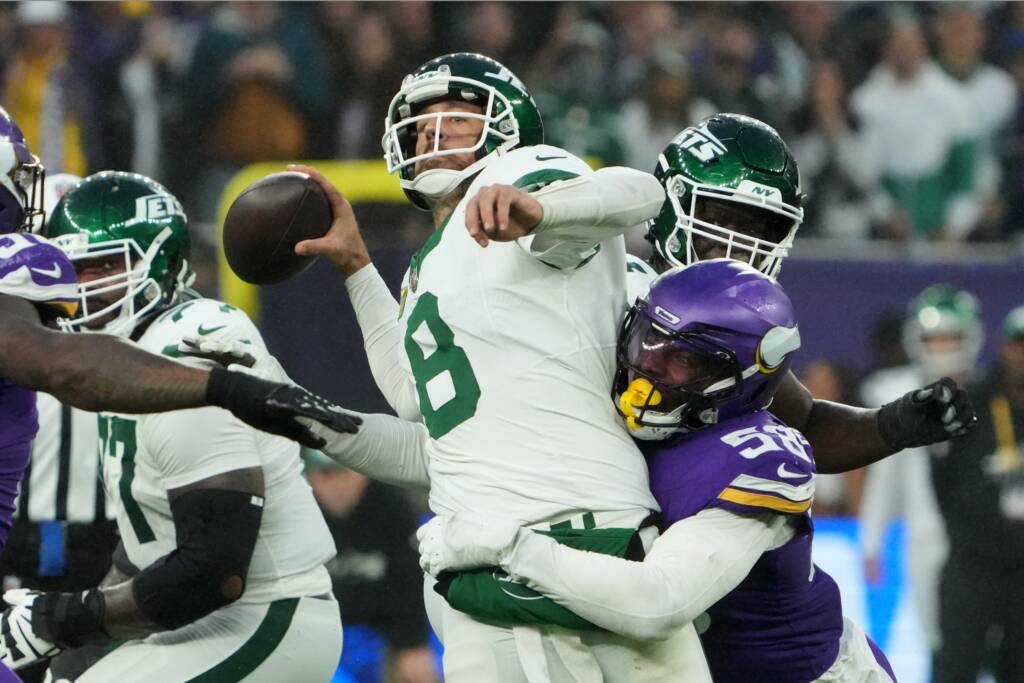It was a beautiful September afternoon. For the first time in nearly two years, fans packed U.S. Bank Stadium to get a glimpse at their Minnesota Vikings. Unlike the squad they had seen late in 2019, this was a team coming off a thrilling offseason. With a series of free-agent signings, they expected a display of exceptional offense, dominating defense, and a team worthy of pushing toward a Super Bowl.
But while Mike Zimmer was supposed to be a ringmaster for the latest and greatest show on turf, he wound up being a carney leading a freak show gone wrong.
It started when the Vikings signed the incredible ageless wonder, Patrick Peterson. The signing brought name recognition to the secondary and a potential mentor for the younger players. To an extent, Peterson’s signing has paid off. According to Pro Football Focus, Peterson grades 37th among cornerbacks with 50% of the league lead in snaps and has been Minnesota’s top cornerback. But the Vikings are getting this production at a premium price.
When Rick Spielman discussed the Peterson signing, he revealed that Peterson’s agent called the Vikings to signal his interest. With Peterson’s brand name, they couldn’t resist and signed him to a 1-year, $10 million deal.
If Peterson had been the All-Pro cornerback that he had been throughout his career, the price wouldn’t be a problem. But at age 31, the risk of injury was always a factor and popped up when Peterson missed three games due to a tweaked hamstring.
The Vikings also paid a premium price to assemble a two-headed monster in the middle of the defensive line. This process started the previous offseason when they signed Michael Pierce to a 3-year, $27 million deal in March 2020.
The Pierce signing has been a disappointment because he hasn’t been available. After opting out of the 2020 season, Pierce hasn’t seen the field since a Week 4 loss to the Cleveland Browns. Even when he is back off the sidelines, he looks more like a run-stuffer than the all-around force that Linval Joseph was during his time in Minnesota.
The same goes for Dalvin Tomlinson, another crown jewel of the Vikings’ free-agent class. After signing a 2-year, $22 million contract, Tomlinson has been on the field but hasn’t provided much to validate his salary. Tomlinson has just 26 tackles and 1.5 sacks in ten games this season. Those numbers are acceptable considering the Vikings didn’t sign him for his pass-rushing prowess, and he ranks 19th among qualifying defensive tackles in PFF’s run-defense grades.
But the biggest disappointment has been his inability to prevent impact plays on the ground. Tomlinson comes in 37th in PFF’s tackling grades and ranks 29th among defensive tackles with a 10.7% missed tackle rate.
It’s a big reason why the Vikings are allowing a league-high 4.8 yards per carry and why Tomlinson hasn’t been worthy of the 11th-highest salary among interior defenders.
There’s also the secondary, which is a collection of human torches. Mackensie Alexander was supposed to bring stability to the nickel position, but he has turned into one of the worst cornerbacks in the NFL. The 1-year, $1.1 million deal to bring him back isn’t a killer, but the 112.6 quarterback rating allowed hasn’t made for a happy homecoming.
There’s also Bashaud Breeland, who currently ranks 76th among qualifying cornerbacks. Like Alexander, who ranks 78th among qualifiers, Breeland’s deal doesn’t break the bank but shines a light on a bigger problem.
Since the 2016 draft, the Vikings have failed to build considerable depth on their roster. Just like Dumbo needs a tent to prevent him from flying away, Minnesota needs a contingency plan in case things go wrong. It’s why when the Vikings tried to build a defensive core of young players last year, they became one of the worst defenses in the NFL. It’s also why they felt they needed to throw $45 million at their defense just to give themselves a chance.
While that money could have been used at guard, the Vikings may have felt more comfortable doing so had they built a young stable of players ready to contribute.
If Cameron Dantzler took a step forward from his rookie year, there might not be a need to sign Breeland. If Armon Watts or James Lynch showed out, the Pierce/Tomlinson combo might not be necessary. Even if D.J. Wonnum progressed, they might not have needed to roll the dice on Everson Griffen.
All of these things could have made for a more entertaining showdown in the final six-week stretch of the season. Instead, Zimmer and Spielman are sitting on a seat that’s becoming increasingly warmer.

